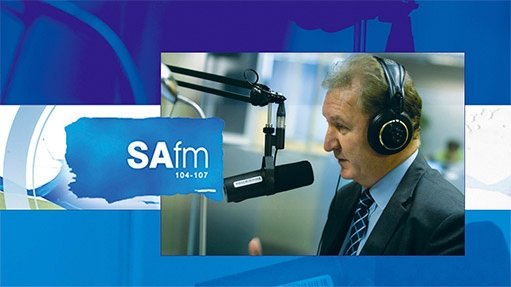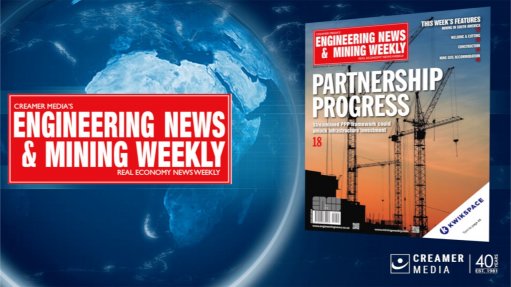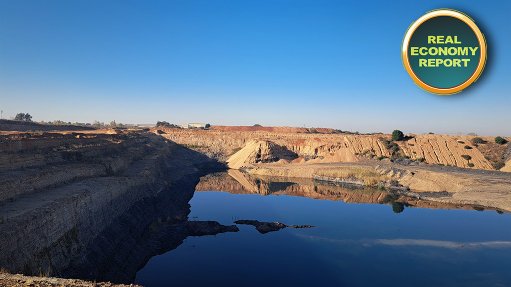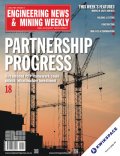Using materiality assessments to meaningfully engage stakeholders in ESG priority-setting
This article has been supplied by the author and has not been written or solicited by Creamer Media. It may be available only for a limited time on this website.
In an era where environmental, social and governance (ESG) considerations are increasingly pivotal in organisational decision-making and strategy design, the importance of stakeholder engagement cannot be overstated. An in-depth understanding of stakeholder priorities and the ESG factors that drive business success is necessary for any organisation looking to take its approach from ESG box-ticking to something that leads to genuine social and environmental impact. Materiality assessments are a valuable, multi-faceted tool that support organisations in strengthening their ESG strategies and reporting, in part by enabling meaningful stakeholder engagement.
ESG is a measurement and analysis framework used to understand and measure how sustainably an organisation is operating. Organisations implementing strong ESG strategies have a structured way in which to mitigate harms and create positive impact for society, while also benefiting themselves: a strong ESG proposition can safeguard a company’s long-term success and often correlates with higher financial returns and lower downside risk.
For the integration of ESG concerns into business strategy to be effective, however, it must be based in the intentional engagement of stakeholders – those directly affected by investment decisions. This approach not only enhances the effectiveness of efforts to achieve impact but also strengthens relationships, fosters trust, and drives sustainable, positive change. This thinking is being increasingly corroborated by organisations: according to McKinsey’s 2019/2020 Global Survey for external engagement, nearly 60% of respondents said that stakeholder engagement and inclusivity ranks within their CEO’s top three priorities.
One of the most commonly used tools to engage stakeholders in relation to ESG is the materiality assessment. This is a structured process used by companies to identify, prioritise, and be better able to address the most significant ESG issues relevant to their business operations and stakeholders. ESG materiality assessments are therefore a very valuable starting point in improving transparency and accountability, mitigating identified risks, and reporting on ESG issues in a way that most resonates with stakeholders. A materiality assessment can also bring to light inefficiencies, areas for improvement, and opportunities for innovation through the process of gathering input from internal and external stakeholders. Organisations that proactively identify and address material ESG issues and innovate in response to stakeholder needs can differentiate themselves in the market and gain a competitive advantage.
Tshikululu has developed an adaptable, responsive ESG materiality assessment approach based on our experience in supporting organisations looking to develop a foundation for their ESG strategies. In the process, we have identified several key success factors that form the basis of an effective materiality assessment:
1. Adequate time and resources: Conducting a comprehensive materiality assessment requires careful deliberation, data gathering, and analysis, all of which take time and resources to execute effectively. Rushing through the process can compromise the quality of insights gained and hinder the organisation's ability to prioritise key ESG issues. We tailor each materiality assessment to the client’s needs and budget with a view to efficiency, without ever compromising on quality by cutting corners.
2. Access to diverse data sources: A range of qualitative and quantitative data sources is needed for an accurate materiality assessment. Our process involves surveys and interviews to gather both qualitative and quantitative data from the most critical stakeholders as agreed upon with the client. While quantitative data provides measurable metrics, qualitative data offers valuable insights into stakeholder perceptions, societal trends, and emerging risks and opportunities. Combining these data types enriches the assessment process and leads to more robust conclusions.
3. Stakeholder buy-in: Engaging a broad and intentional mix of stakeholders is essential for capturing a comprehensive range of perspectives and priorities. From investors and employees to customers and community members, each stakeholder group brings unique insights that can shape the organisation's understanding of material ESG issues. We work hand-in-hand with our clients to ensure that stakeholders have a sound understanding of the purpose of the assessment and what will be expected of their participation.
By prioritising these foundational elements, organisations can embark on their ESG materiality assessment journey with confidence, paving the way for informed decision-making that leads to impact. Tshikululu’s approach to materiality assessments is rooted in our decades of experience in the social impact sector. As such, it is especially well suited for organisations whose aim in developing an ESG strategy is to create positive social and environmental impact rather than simply minimise risks. Our materiality assessment tool is structured to engage critical stakeholders and analyse their insights to identify the most relevant ESG topics for an organisation – while stakeholder engagement is not a once-off exercise, this lays the groundwork for impactful ESG strategies based on meaningfully engaging the people who matter most to the organisation.
Comments
Press Office
Announcements
What's On
Subscribe to improve your user experience...
Option 1 (equivalent of R125 a month):
Receive a weekly copy of Creamer Media's Engineering News & Mining Weekly magazine
(print copy for those in South Africa and e-magazine for those outside of South Africa)
Receive daily email newsletters
Access to full search results
Access archive of magazine back copies
Access to Projects in Progress
Access to ONE Research Report of your choice in PDF format
Option 2 (equivalent of R375 a month):
All benefits from Option 1
PLUS
Access to Creamer Media's Research Channel Africa for ALL Research Reports, in PDF format, on various industrial and mining sectors
including Electricity; Water; Energy Transition; Hydrogen; Roads, Rail and Ports; Coal; Gold; Platinum; Battery Metals; etc.
Already a subscriber?
Forgotten your password?
Receive weekly copy of Creamer Media's Engineering News & Mining Weekly magazine (print copy for those in South Africa and e-magazine for those outside of South Africa)
➕
Recieve daily email newsletters
➕
Access to full search results
➕
Access archive of magazine back copies
➕
Access to Projects in Progress
➕
Access to ONE Research Report of your choice in PDF format
RESEARCH CHANNEL AFRICA
R4500 (equivalent of R375 a month)
SUBSCRIBEAll benefits from Option 1
➕
Access to Creamer Media's Research Channel Africa for ALL Research Reports on various industrial and mining sectors, in PDF format, including on:
Electricity
➕
Water
➕
Energy Transition
➕
Hydrogen
➕
Roads, Rail and Ports
➕
Coal
➕
Gold
➕
Platinum
➕
Battery Metals
➕
etc.
Receive all benefits from Option 1 or Option 2 delivered to numerous people at your company
➕
Multiple User names and Passwords for simultaneous log-ins
➕
Intranet integration access to all in your organisation

















